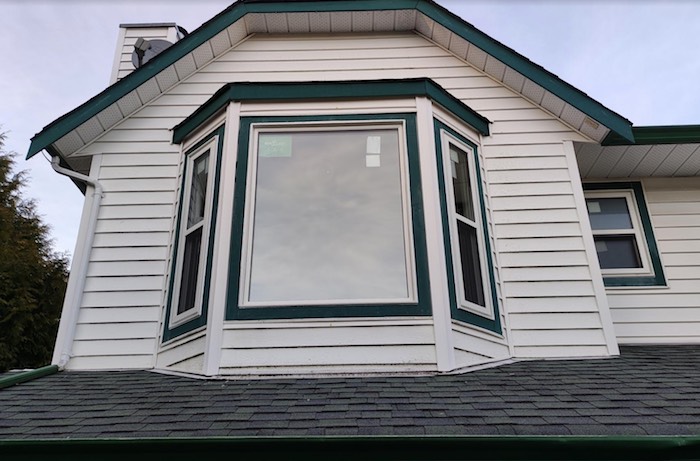Business
When it’s time to consider new windows, here’s what you need to know

Replacement Windows vs. New-Construction Windows – What Should I Get?
If installing new windows for your home is on your 2022 to-do list, there are two routes you can take. Either you can get new construction or replacement windows. The type you choose depends upon several factors, such as your house, current windows, and their condition.
If you are new to home renovation, you must wonder what the difference is between replacement and new construction windows. Keep reading to learn everything about both types and where to buy windows that work best for your house.
What are replacement windows?
As the name suggests, these windows basically replace your house’s old windows using the existing rough openings. They are usually custom-made to fit easily into the current frame.
Replacement windows are comparatively easy to install than construction windows as they require minimal work, which can be done without touching the trims or the insulation around the window.
What are construction windows?
New construction windows are typically used for newly constructed homes or other new constructions, like a home extension. This does not imply that they can only be used for newly built homes. In some situations, such as intense remodelling or repairing badly damaged existing structures, replacing old windows with new construction windows is the best option.
Replacement windows and construction windows are available in various styles, finishes, and materials. So you can pretty much find a style that goes well with your home based on whichever window is right for your home.
When should I use replacement windows?
Replacement windows are a good choice if your window frames are in good condition and you’re ready to invest in new energy-efficient windows. Generally, these units are used when the wall has already been constructed and cannot be significantly altered. These windows are ideal when:
- you are replacing an existing window
- you want the wall to stay in its place as much as possible
- the window is not going to be used for a new building
- you want to get the same window style but modern and energy-efficient
When should I use new-construction windows?
Replacement windows are not the ideal option if the window frames in your current home are damaged. In that case, you would need to remove the existing frame. Installing new construction windows is the ideal solution in such a situation. In addition, new construction windows are suitable when:
- you are building a new house
- you are planning an extension in your house
- the wall is being rebuilt
- the wall is damaged and needs major repairing
Whether you should opt for replacement or new-construction windows depends upon several factors, as mentioned above. However, keep in mind that construction windows are standard-sized windows. So you cannot just plug them into any opening where an existing window was removed from, even if they appear to be the exact same size as the old window.
Which one is more cost-effective?
When it comes to installing new windows in your home, replacement windows are generally the least expensive option. Because these windows are inserted in existing frames, they typically require less labour making them more affordable. The price for a replacement window may start from $300 per unit and rise depending on the custom features you choose, such as:
- Frame material. Vinyl here is the most affordable, while wood is the most expensive.
- Hardware. You can choose standard or opt for elite hardware, customizing locks, handles, etc., to match your preferences.
- Colour. White, Black or other basic colours will not significantly affect the price. Still, if you want custom shades to complement your exterior and interior, you should expect a price change of around 15%.
- Glazing. The current standard is double pane windows, but if you live in cold regions, triple pane windows would be a better choice. But the price for these units may be up to 20% higher depending on the glazing and LoE coating you choose.
Initially, the price of new-construction windows may appear less, but it truly relies on the type and number of windows you order. Since they are standard size, they are produced in large volumes and hence available at a lower price.
However, the price can significantly increase when you consider the cost of replacing the current window frame and repairing the surrounding interior and exterior walls.
But installing construction windows can prove to be the most acceptable alternative and the best investment if you’re installing windows in new construction or your current window frames are in poor condition.
Where to buy new windows for your house?
Due to a large number of Red Deer window companies in the market today, you will have several options at various price ranges.
To help you pick the best option for your house, we advise dealing with experienced professionals that offer Energy Star-rated windows, free quotes & consultation and qualified in-house installers to ensure correct installation and maximum energy efficiency for your new windows.
Final thoughts
If you are about to install new windows, choosing whether to get replacement windows or new construction windows is a decision you must make very carefully.
A new construction window may be a good option in situations like an extension to your home or building a new home.
However, a replacement window will be more suitable if you plan to replace your existing windows, not changing rough openings and window styles. Opting for custom-made replacement windows means saving yourself a lot of time, hassle, and money in the future.
Business
Vacant Somali Daycares In Viral Videos Are Also Linked To $300 Million ‘Feeding Our Future’ Fraud


From the Daily Caller News Foundation
Multiple Somali daycare centers highlighted in a viral YouTube exposé on alleged fraud in Minnesota have direct ties to a nonprofit at the center of a $300 million scam, the Minnesota Star Tribune reported Thursday.
The now-infamous videos from YouTube influencer Nick Shirley, posted Dec. 26, showed several purported Somali-run daycare centers receiving millions in taxpayer funds despite little evidence that children were actually present at the facilities. Now it turns out that five of the 10 daycare centers Shirley visited operated as meal sites for Feeding Our Future, the Minnesota-based nonprofit implicated in a massive fraud scheme that has already produced dozens of convictions, the outlet reported.
Between 2018 and 2021, those five businesses received nearly $5 million from Feeding Our Future, the outlet reported. While none of the centers in Shirley’s video have been legally accused of wrongdoing, the revelations underscore the sprawling web of fraud engulfing the state. (RELATED: Somalis Reportedly Filled Ohio Strip Mall With Potential Fraudulent Childcare Centers)
Dear Readers:
As a nonprofit, we are dependent on the generosity of our readers.
Please consider making a small donation of any amount here.
Thank you!
🚨 Here is the full 42 minutes of my crew and I exposing Minnesota fraud, this might be my most important work yet. We uncovered over $110,000,000 in ONE day. Like it and share it around like wildfire! Its time to hold these corrupt politicians and fraudsters accountable
We ALL… pic.twitter.com/E3Penx2o7a
— Nick shirley (@nickshirleyy) December 26, 2025
Federal prosecutors have charged over 70 individuals — mostly from the Somali community — with stealing more than $300 million from the Federal Child Nutrition Program through Feeding Our Future. During the COVID-19 pandemic, the program funded sites across Minnesota to provide meals to children. Prosecutors say leaders of Feeding Our Future, along with dozens of associates who ran sponsored “meal sites,” submitted false or inflated meal counts to claim reimbursements.
One facility featured in Shirley’s video, the Minnesota Best Childcare Center, received $1.5 million from Feeding Our Future, according to the Minnesota Star Tribune.
Minnesota Best Childcare Center, which has been licensed by the state since 2013, did not respond to the Daily Caller News Foundation’s request for comment.
Other daycares featured in Shirley’s video have been cited dozens of times for rule violations while continuing to receive millions in state funding. The now-infamous Quality “Learing” Center was cited for 121 violations in the past three years, including for failing to report a “death, serious injury, fire or emergency as required,” according to the Star-Tribune.
The paper’s investigation found that six of the facilities featured by Shirley were either closed or employees did not open their doors.
Following that exposé, which has accumulated more than 135 million views on X, the Trump administration announced it would freeze all childcare disbursements to Minnesota while federal officials review how taxpayer dollars have flowed to licensed providers.
The fraud allegations extend beyond childcare, with prosecutors claiming millions in taxpayer funds were also stolen from Minnesota’s Housing Stabilization Services and autism treatment programs. Federal prosecutors also estimate that as much as half of the roughly $18 billion Minnesota has spent since 2018 on 14 Medicaid programs may have been siphoned off by fraudsters.
Even the state’s assisted living program has come under scrutiny, with Republican state Rep. Kristin Robbins warning that individuals connected to the Feeding Our Future scheme continue to receive millions in taxpayer funds.
Business
The great policy challenge for governments in Canada in 2026

From the Fraser Institute
According to a recent study, living standards in Canada have declined over the past five years. And the country’s economic growth has been “ugly.” Crucially, all 10 provinces are experiencing this economic stagnation—there are no exceptions to Canada’s “ugly” growth record. In 2026, reversing this trend should be the top priority for the Carney government and provincial governments across the country.
Indeed, demographic and economic data across the country tell a remarkably similar story over the past five years. While there has been some overall economic growth in almost every province, in many cases provincial populations, fuelled by record-high levels of immigration, have grown almost as quickly. Although the total amount of economic production and income has increased from coast to coast, there are more people to divide that income between. Therefore, after we account for inflation and population growth, the data show Canadians are not better off than they were before.
Let’s dive into the numbers (adjusted for inflation) for each province. In British Columbia, the economy has grown by 13.7 per cent over the past five years but the population has grown by 11.0 per cent, which means the vast majority of the increase in the size of the economy is likely due to population growth—not improvements in productivity or living standards. In fact, per-person GDP, a key indicator of living standards, averaged only 0.5 per cent per year over the last five years, which is a miserable result by historic standards.
A similar story holds in other provinces. Prince Edward Island, Nova Scotia, Quebec and Saskatchewan all experienced some economic growth over the past five years but their populations grew at almost exactly the same rate. As a result, living standards have barely budged. In the remaining provinces (Newfoundland and Labrador, New Brunswick, Ontario, Manitoba and Alberta), population growth has outstripped economic growth, which means that even though the economy grew, living standards actually declined.
This coast-to-coast stagnation of living standards is unique in Canadian history. Historically, there’s usually variation in economic performance across the country—when one region struggles, better performance elsewhere helps drive national economic growth. For example, in the early 2010s while the Ontario and Quebec economies recovered slowly from the 2008/09 recession, Alberta and other resource-rich provinces experienced much stronger growth. Over the past five years, however, there has not been a “good news” story anywhere in the country when it comes to per-person economic growth and living standards.
In reality, Canada’s recent record-high levels of immigration and population growth have helped mask the country’s economic weakness. With more people to buy and sell goods and services, the overall economy is growing but living standards have barely budged. To craft policies to help raise living standards for Canadian families, policymakers in Ottawa and every provincial capital should remove regulatory barriers, reduce taxes and responsibly manage government finances. This is the great policy challenge for governments across the country in 2026 and beyond.
-

 Energy1 day ago
Energy1 day agoRulings could affect energy prices everywhere: Climate activists v. the energy industry in 2026
-

 Digital ID1 day ago
Digital ID1 day agoThe Global Push for Government Mandated Digital IDs And Why You Should Worry
-

 Bruce Dowbiggin1 day ago
Bruce Dowbiggin1 day agoThe Rise Of The System Engineer: Has Canada Got A Prayer in 2026?
-

 International1 day ago
International1 day agoMaduro says he’s “ready” to talk
-

 International1 day ago
International1 day agoLOCKED AND LOADED: Trump threatens U.S. response if Iran slaughters protesters
-

 International3 hours ago
International3 hours ago“Captured and flown out”: Trump announces dramatic capture of Maduro
-

 International3 hours ago
International3 hours agoTrump Says U.S. Strike Captured Nicolás Maduro and Wife Cilia Flores; Bondi Says Couple Possessed Machine Guns
-

 Business3 hours ago
Business3 hours agoVacant Somali Daycares In Viral Videos Are Also Linked To $300 Million ‘Feeding Our Future’ Fraud





